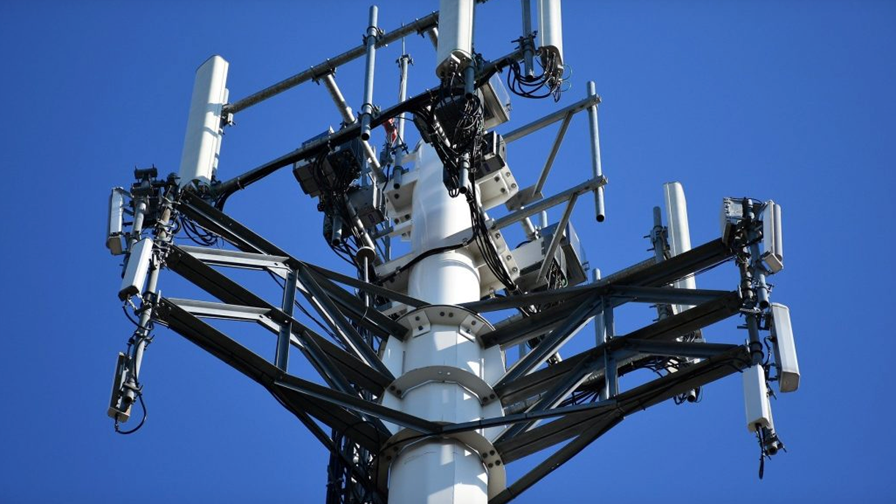
- OpenRAN supporters to collaborate on radio R&D
- Target Q1 2021 for full set of OpenRAN radios for US market
- Developments comply with latest US security rules
Sensing an opportunity to get OpenRAN gear deployed in US networks sooner rather than later, Altiostar and Mavenir, two of the most vocal supporters of open mobile infrastructure based on disaggregated systems, are to collaborate on the development of “a wide portfolio” of radios “based on OpenRAN principles” for US operators.
In an effort to broaden the supply chain to prospective users, the partners say the resulting radios, which will be suitable for the spectrum bands used by national, regional and rural network operators across the US for their 4G and 5G networks, will be made available to third party equipment manufacturers and systems integrators.
And, of course, the radios will be compliant with O-RAN interfaces and “interwork with other vendors' solutions," noted Mavenir CEO Pardeep Kohli in the announcement about the collaboration. A complete set of radios will be available by the first quarter of next year, according to the two companies.
The duo, both of which are members of the OpenRAN Policy Coalition that includes a number of US and international operators amongst its membership, say the radios will support the Secure and Trusted Communications Networks Act that aims to “prevent communications equipment or services that pose a national security risk from entering U.S. networks.”
In practise, this means US operators can be confident of deploying the technology and not worry that federal authorities will demand its removal. Or, put another way, they can be confident that it is made with US technology and not with anything developed in China.
OpenRAN options are growing in popularity, as they allow operators to select best-of-breed components comprising disaggregated hardware and software elements from preferred suppliers that conform to open interface specifications and architectures defined by industry bodies such as the O-RAN Alliance and Telecom Infra Project (TIP). Such architectures enable the operators to break free from the tightly-integrated systems (using proprietary interfaces and supporting software) that tie them into working with the major radio access network infrastructure suppliers such as Ericsson, Huawei and Nokia. In theory, OpenRAN deployments should also be able to take advantage of the latest ecosystem innovations (without having to wait for one vendor to introduce new functions) while sourcing a network at lower cost.
However, there are still concerns holding back more widespread deployment of OpenRAN technology, mainly that the scalability and reliability of such systems do not currently match the tech available from the giant market leaders, and that integrating elements from multiple suppliers creates a supply chain and operational headache that could lead to deployment challenges, reliance and lock-in to external systems integrators and ultimately lead to little if any reductions in the total cost of ownership.
Such challenges, though, appear to be eroding and as the months go on so companies such as Mavenir, Altiostar and Parallel Wireless attract more business and commercial deployments, such as the recent deals at Vodafone Idea and Dish by Mavenir, while Altiostar is a supplier at the poster child for next-gen OpenRAN deployments, Rakuten Mobile (which has also invested in its supplier).
Altiostar and Mavenir will be hoping that more US operators join the growing list of OpenRAN converts, but for another company aiming to break the strangelhold of the RAN incumbents today's move will not do much to move the needle and doesn't address the global requirement for open 5G systems.
Steve Papa, CEO at Parallel Wireless, stated in comments emailed to the press:
"The US rural operators are looking for 4G-like radios versus the 5G active antennas that make 5G so compelling. These 5G active antennas (Massive MIMO) are where Huawei has their lead and developing this line of radios is not going to change that lead. Huawei has developed the most power-efficient radios because it’s been investing in gallium nitride semiconductor solutions much more than Ericsson, Nokia, and other independent radio vendors. Energy efficiency is of paramount importance to operators, particularly in rural and 5G deployment because it impacts radio weight (heat dissipation) and radio size thus affecting everything from the cost of reinforcing towers with new steel, bigger copper cables to carry electricity, bigger backup batteries, bigger generators, fuel tanks and even the size of the crane required for installation.
The biggest challenge for operators is 'future proofing' their investments. They need to know that if they deploy ORAN, that beyond just solving the rural problem of today that they can also ultimately solve the high-end 5G massive MIMO problem. In order for operators to make big ORAN investments they need confidence that ORAN can solve their entire problem and it is critical ORAN has an answer for 5G massive MIMO. To become competitive with Huawei’s 5G, the place the industry needs to put the money is in the semiconductor innovation that enables Massive MIMO radios that are cost effective and more energy efficient than Huawei. If Ericsson and Nokia are struggling to be competitive with Huawei’s radios we should not expect ORAN to magically solve this problem by using the same semiconductors available to Ericsson and Nokia at present. Given the long lead times for semiconductor innovation it is imperative that it happens in 2020 if ORAN is to deliver on a compelling alternative to Huawei within a few years."
That, no doubt, is what the OpenRAN Policy Coalition members hope will be addressed with US federal funding support.
- Ray Le Maistre, Editorial Director, TelecomTV
Email Newsletters
Sign up to receive TelecomTV's top news and videos, plus exclusive subscriber-only content direct to your inbox.




